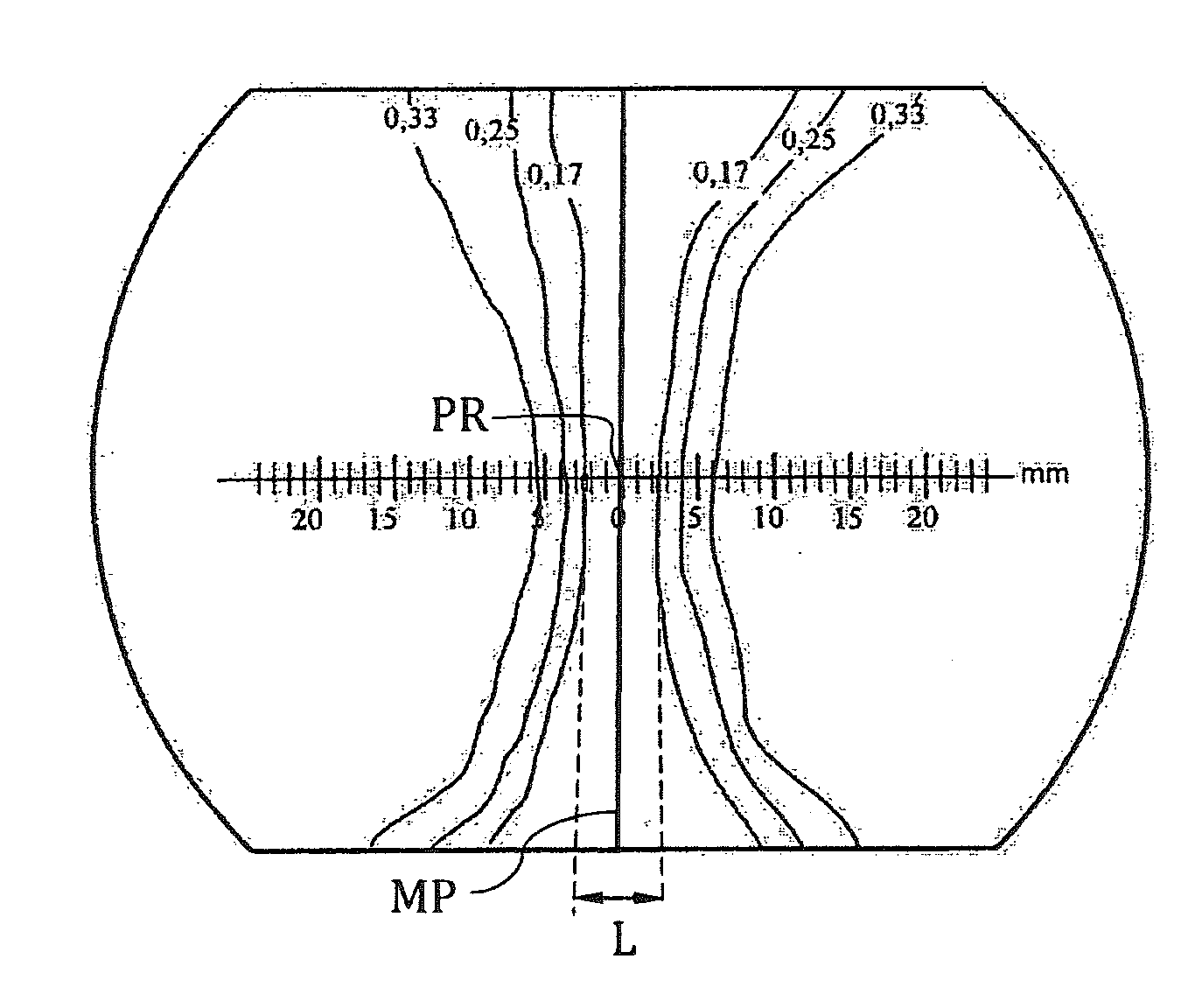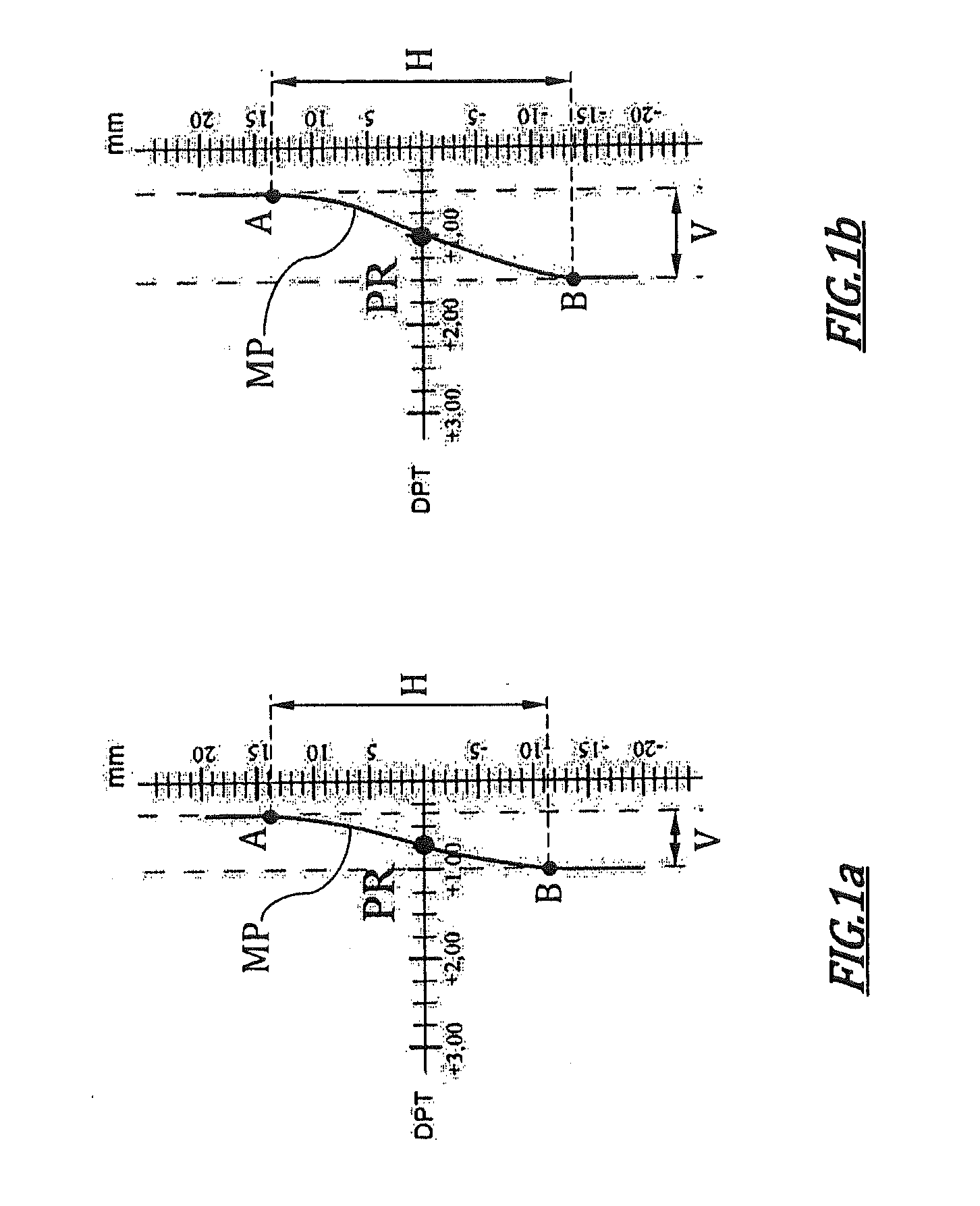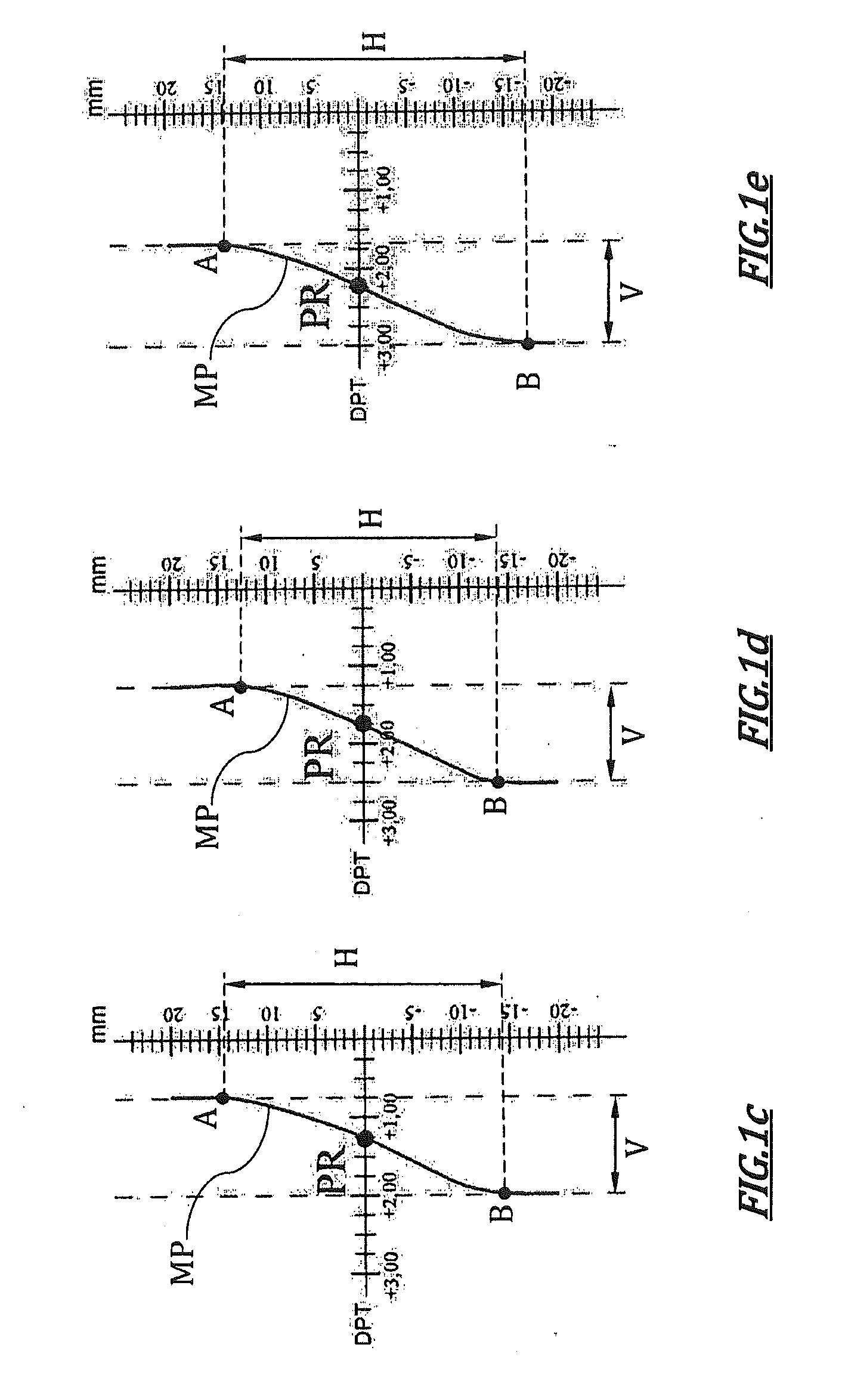Ophthalmic lens and spectacles comprising at least such one lens
- Summary
- Abstract
- Description
- Claims
- Application Information
AI Technical Summary
Benefits of technology
Problems solved by technology
Method used
Image
Examples
Embodiment Construction
[0057]A lens according to the invention comprises at least one aspherical face having a geometrical centre and an optical centre which coincide at the point PR in FIGS. 1a-1e. This point PR corresponds to the reference point of the design of the lens, sometimes called the lens design reference point or centering point of the lens. The optical centre may be defined as follows: a light ray from infinity and crossing the lens at the optical centre does not undergo any angular deviation.
[0058]The aspherical face has at each point a sphere power value and a cylinder power value.
[0059]This aspherical face has three different vision regions:[0060]a top vision region, located in the high portion of the lens from an upper edge of said lens, and adapted for mid-distance vision, already defined as a vision at a distance of the order of one meter;[0061]a bottom vision region, located in the low portion of the lens from a lower edge of said lens, and adapted for close-distance vision, already de...
PUM
 Login to View More
Login to View More Abstract
Description
Claims
Application Information
 Login to View More
Login to View More - R&D
- Intellectual Property
- Life Sciences
- Materials
- Tech Scout
- Unparalleled Data Quality
- Higher Quality Content
- 60% Fewer Hallucinations
Browse by: Latest US Patents, China's latest patents, Technical Efficacy Thesaurus, Application Domain, Technology Topic, Popular Technical Reports.
© 2025 PatSnap. All rights reserved.Legal|Privacy policy|Modern Slavery Act Transparency Statement|Sitemap|About US| Contact US: help@patsnap.com



